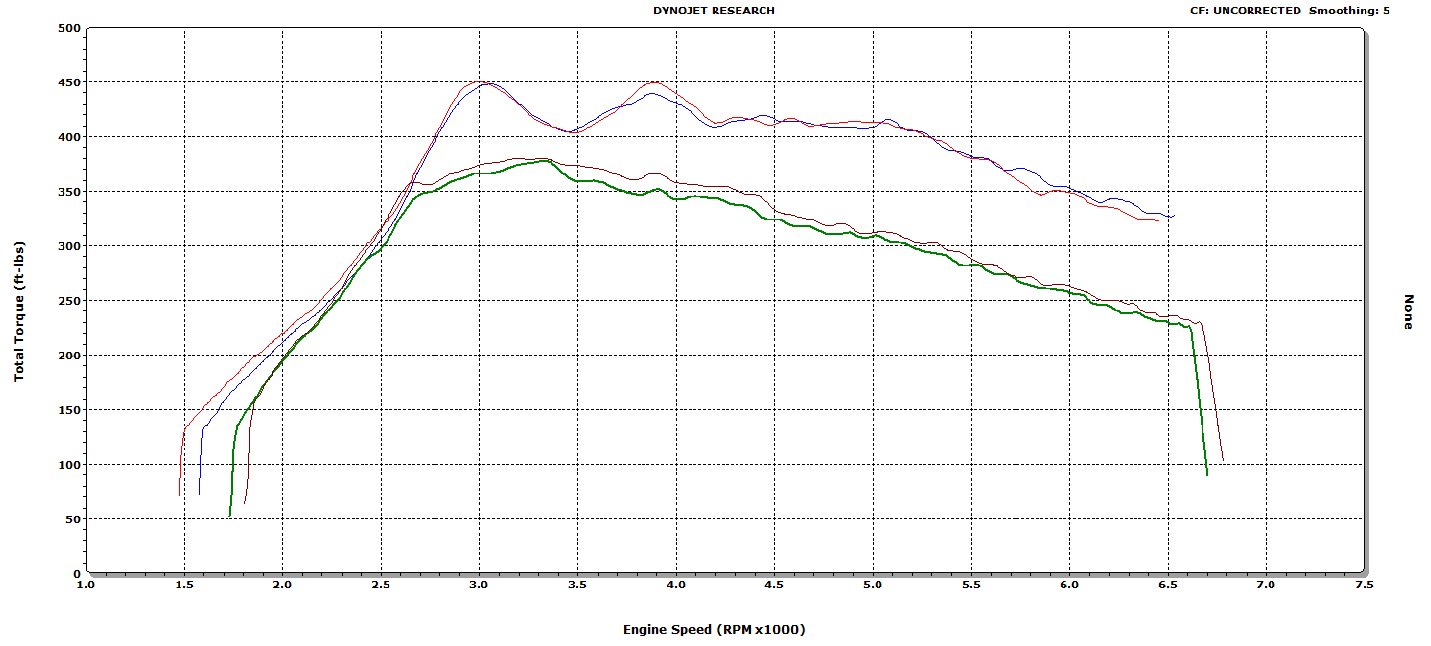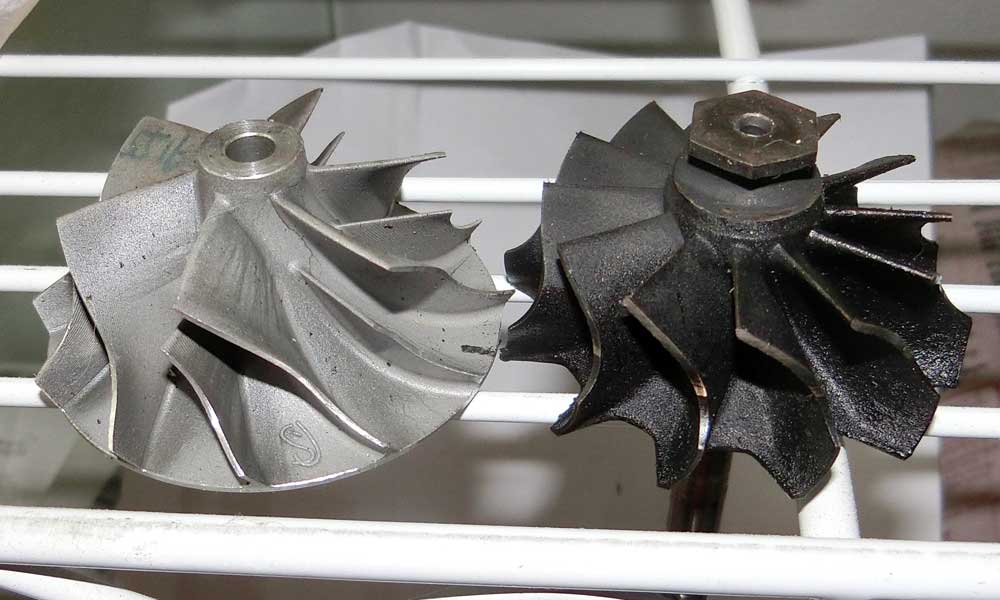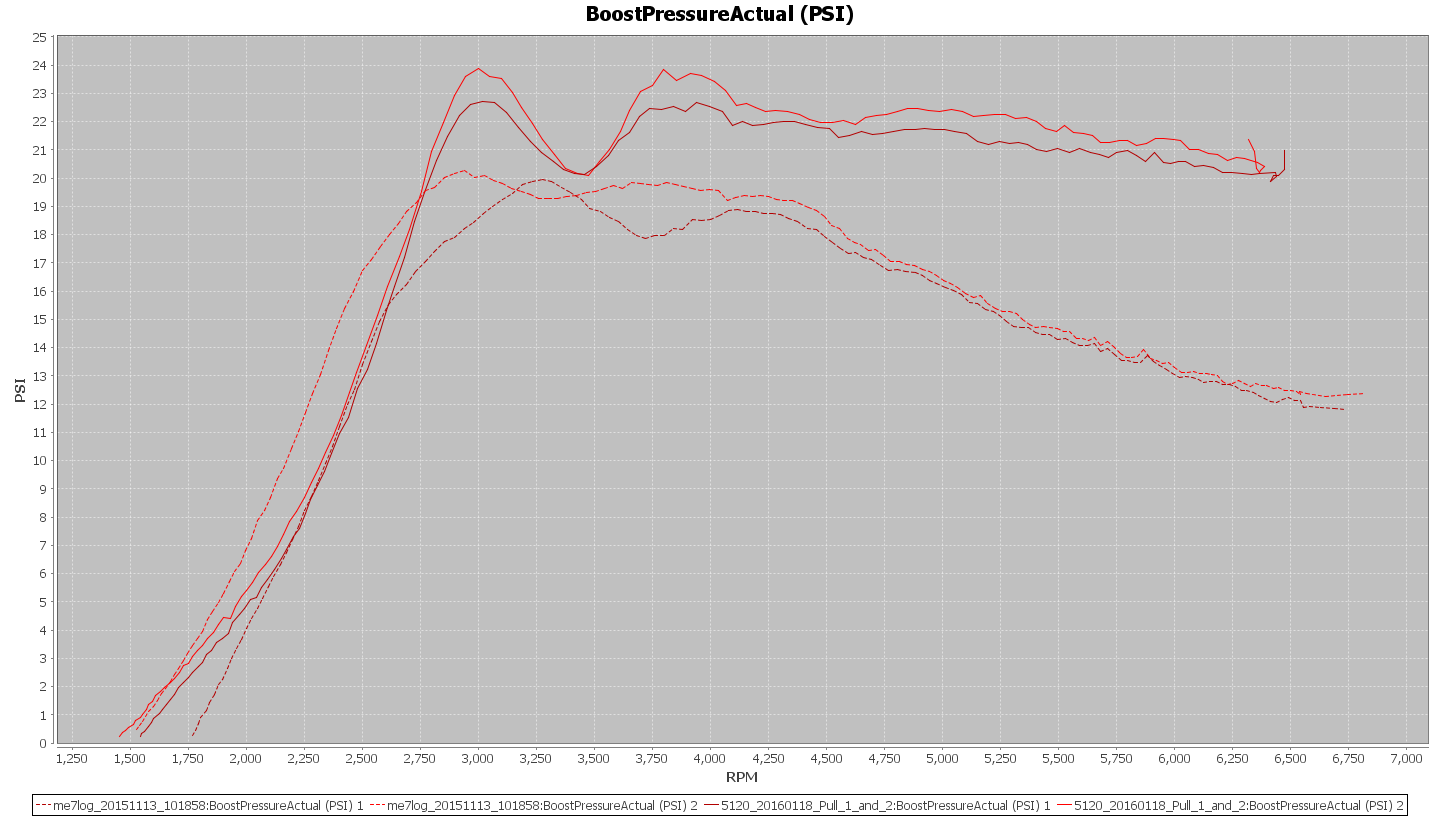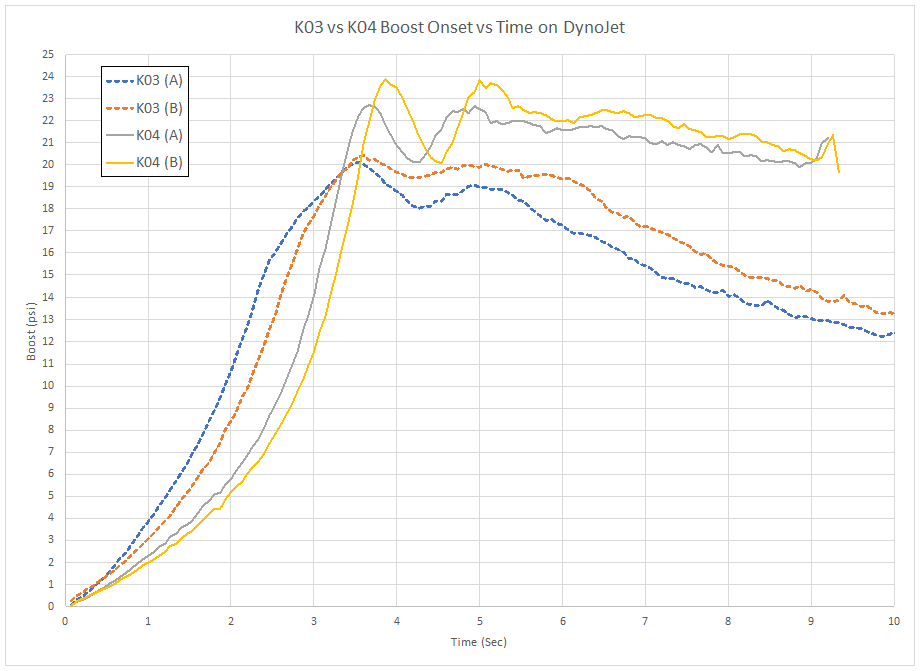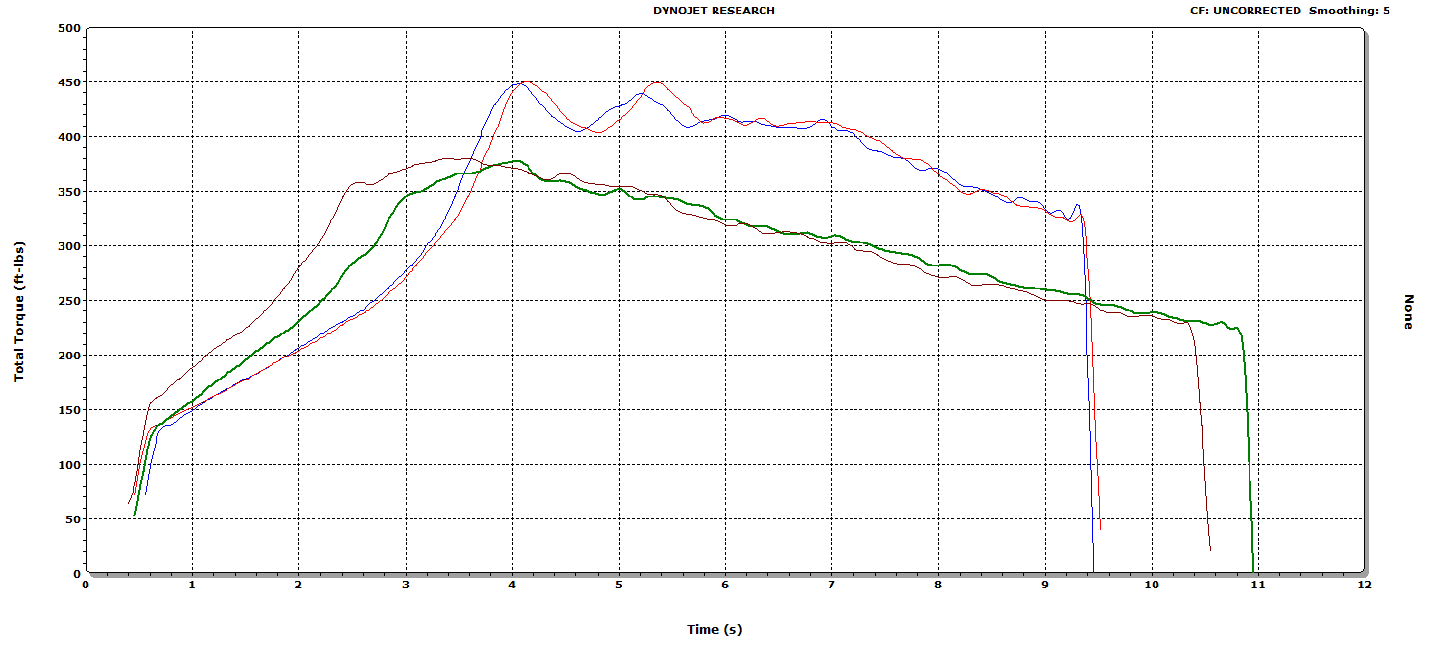Curious about how hot things get under the hood in the area near the airbox, and what the affect on the engine intake air temperature is, I was debating purchasing a cone filter to stick on the end of my MAF housing and record some intake air temperatures.
I wasn’t thrilled about the idea of spending money on an air intake that I didn’t have a strong interest in using permanently on my S4. Then while looking at the engine compartment it occurred to me that I could simulate the cone filter “hot air” intake by removing the snorkel from the stock airbox.
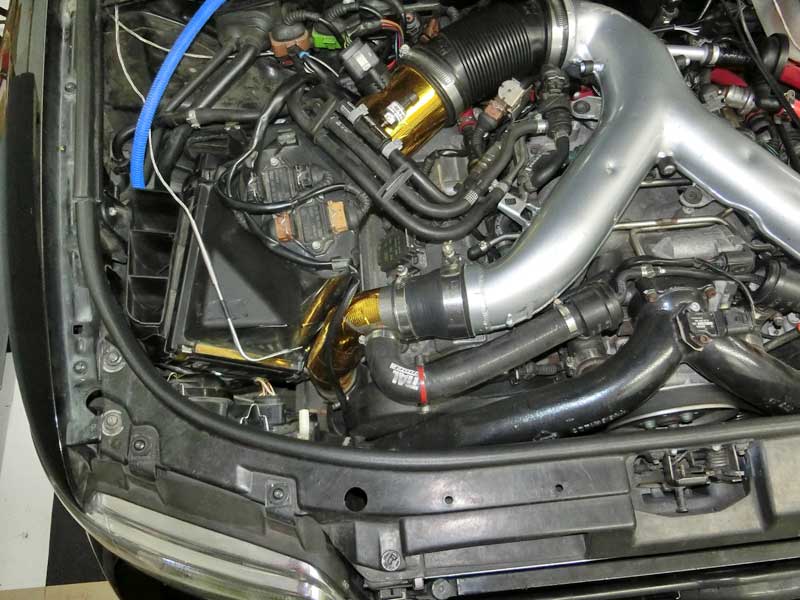
With no snorkel to route cool air from the front of the car to the airbox this arrangement would need to draw air from the same space inside the engine compartment that a cone filter does.
I taped a temperature sensor probe to the airbox sticking out into some open space so that I could record engine compartment air temperature in the vicinity of the airbox. I also had a probe placed in the inlet piping just prior to the turbocharger compressor housing and another in the hard pipe between the turbocharger compressor outlet and the intercooler.
Additionally I would log the Intake Air Temperature at the intake manifold via the cars temperature sensor, and I also noted ambient air temperatures displayed on the instrument panel a couple of times during the test.
The route I drove was the same that I took when testing gold foil wrap on several intake parts, the morning drive starting as mostly steady state and then getting into stop and go traffic. The ambient temperature was about 20 degrees F cooler in the morning than the afternoon. The temperature readings for this morning drive are shown below, along with the drive speed in MPH.
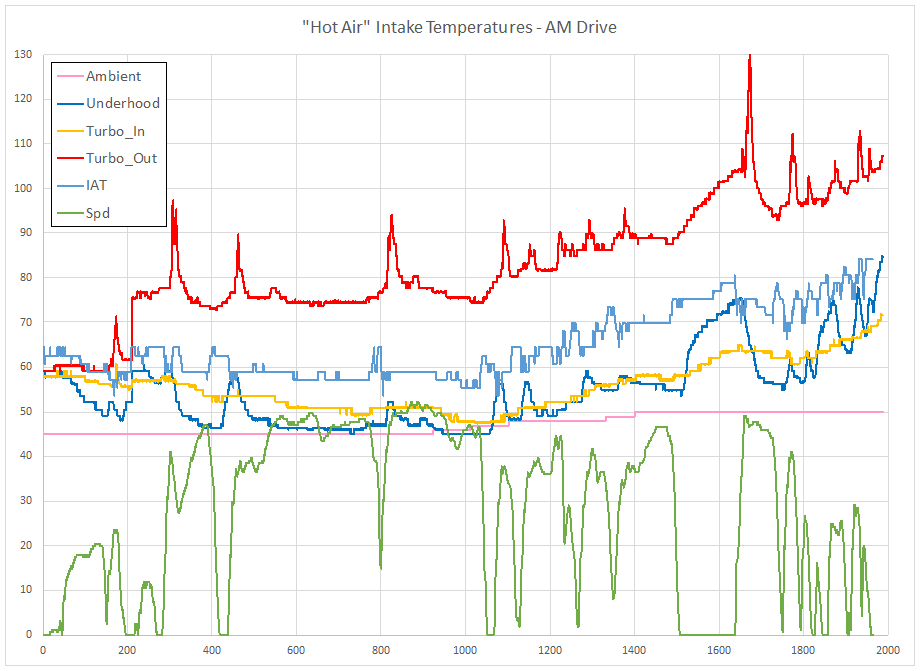
The route was traced back the other direction in the afternoon resulting in the stop and go traffic first, followed by the steady state driving. Ambient temperatures were greater during this drive.
Results are shown below:
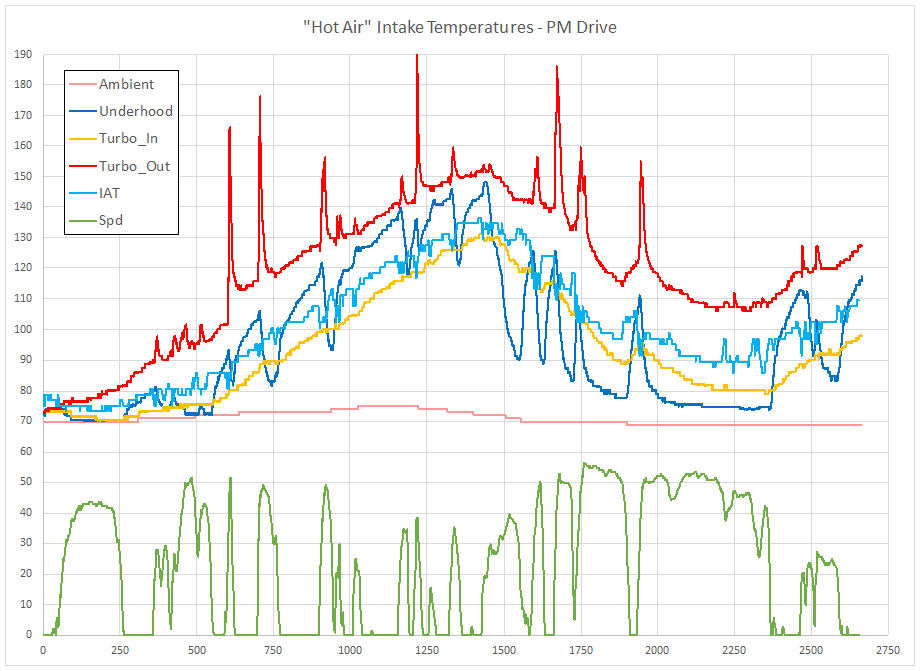
The charts below are for morning and afternoon without the inclusion of turbo in and out temperatures.
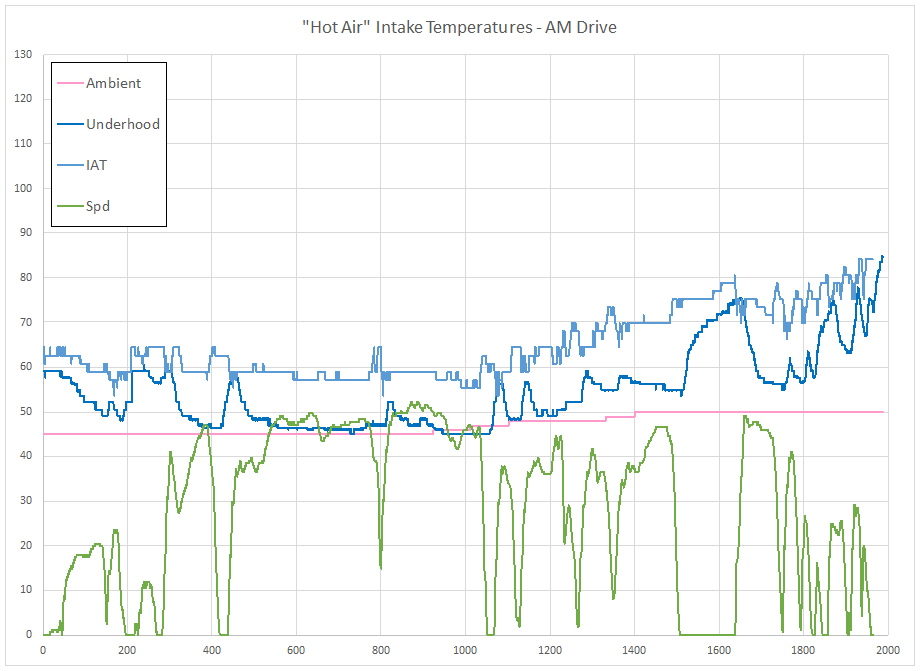
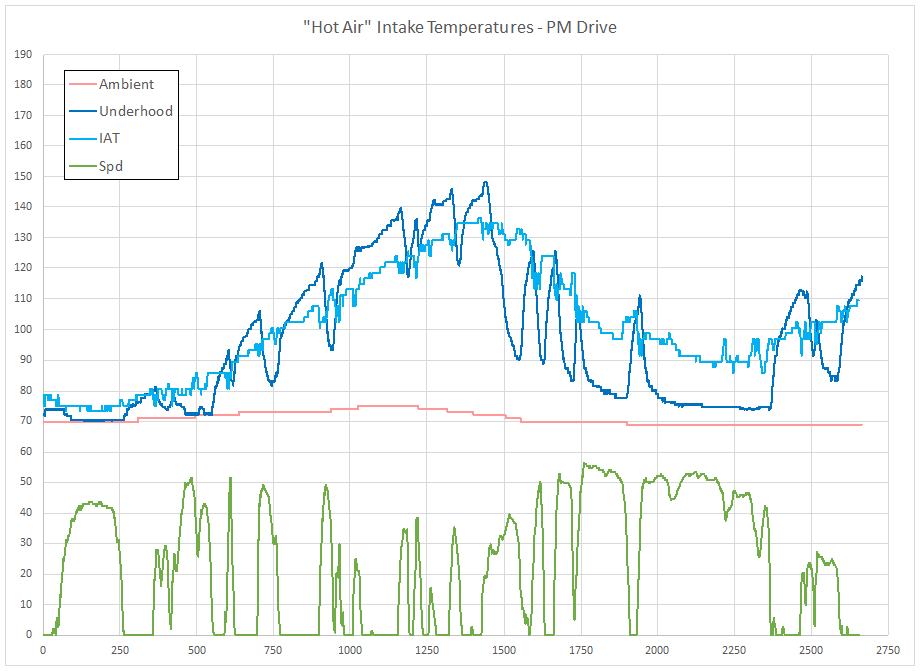
Next up will be to repeat the drive with the forward most part of the snorkel tube installed, still leaving the airbox unattached to the intake.


